At a Glance
- Refocus Sales on Selling: Lift time in front of customers by reducing admin, rebalancing coverage, and sharpening sales activity discipline.
- Streamline the Work Behind the Work: Remove friction in back-office and support functions through workflow simplification, smarter manning, and digital tools that reduce effort and rework.
- Design for Throughput: Redesign processes and roles to maximise output, not headcount — and make every hour on the clock count.
Introduction
This fifth article in our “Thrive Through Turbulence” series focuses on getting more from your people — without burning them out. In many organisations, productivity is mistaken for activity. But presence doesn’t equal performance.
Now is the time for business leaders to ask: Are you genuinely getting full value from our workforce, or simply paying for attendance?
Below are five strategic moves leaders can take today to unlock latent productivity, reduce waste, and create a performance-driven organisation.
1. Get Salespeople Selling Again — Not Drowning in Admin
Too many sales teams spend more time behind screens than in front of customers. Internal reporting, chasing pricing, and firefighting poor service rob reps of their core job: selling.
Refocusing the salesforce on customer-facing time doesn’t just improve conversion — it drives growth without adding headcount.
What You Can Do:
- Time-on-Task Analysis: Audit sales team activity to quantify time spent on admin versus customer engagement — then remove or automate low-value tasks that dilute revenue-generating focus.
- Territory Rebalancing: Align rep coverage with opportunity hotspots. Shrink unproductive routes and maximise client-facing time per rep to increase effective customer touchpoints and conversion rates.
- Pre-Sales Support: Centralise admin tasks like quote generation, order entry, and reporting into a shared function to free up sales time and allow sales to focus fully on selling.
- Sales Activity Cadence: Implement structured weekly call plans, review cycles, and conversion tracking to ensure effort aligns to outcomes, and sales teams build momentum over time.
What It Unlocks:
Your salesforce becomes a true growth engine — spending more time with customers, increasing conversion rates, and driving higher revenue without expanding headcount. Sales becomes focused, faster, and more accountable.
Example:
A large Savings Bank worked with Renoir to address an unsystematic sales planning and underutilised branch staff. To address this, they focused on better staff utilisation for sales, developed new marketing materials, enhanced sales planning and activities, and improved prospect qualification. These initiatives aimed to drive a more proactive and effective sales approach. Key results included a significant increase in new loan value from 38% to 57%. Read the case study.
2. Cut SG&A Drag — Boost Back-Office Efficiency
Support functions should accelerate the business, not slow it down. But many back-office teams carry legacy processes, manual workarounds, and duplicated roles — all of which drain resources.
Simplifying these functions improves speed, reduces overhead, and enables the frontline to perform at its best.
What You Can Do:
- Workflow Mapping: Identify friction-heavy processes and redesign them for speed and simplicity across finance, HR, and admin — while removing redundant approval layers that add no value.
- Self-Service Tools: Deploy user-friendly digital platforms for common tasks like leave requests, approvals, and reporting. Free up support staff to focus on higher-impact, strategic tasks.
- Role Rationalisation: Consolidate fragmented responsibilities into clearer, more strategic roles that drive performance, eliminate duplication, and elevate the strategic capability of support functions.
- Performance Metrics: Set productivity KPIs for SG&A teams and track their contribution to frontline enablement and strategic goals — not just internal task execution.
What It Unlocks:
Support functions run leaner and smarter, delivering faster service with fewer resources. Admin overhead drops, while frontline teams get the enablement they need to execute at pace.
Example:
A global insurer wanted to address a lack of Standard Operating Procedures through workflow mapping. They proposed 96 automation areas for self-service tools, implementing 37 of them. Role rationalisation involved Crewing Master Schedules to optimise staffing. To improve performance metrics, Renoir developed forecast models and a behavioral auditing system due to a lack of tracking. The result was a 31% productivity increase in middle and back-office areas. Read the case study.
3. Redesign Manning Models to Match the Work
Many businesses rely on outdated staffing models that no longer reflect how work is done. Teams are overstaffed in low-demand areas and stretched thin where demand surges.
Productivity gains come from aligning labour to demand — not just cutting heads.
What You Can Do:
- Benchmark Productivity: Compare performance across sites, shifts, and roles to uncover disparities, flag inefficiencies, and spotlight best practices that can be scaled across operations.
- Demand-Based Rostering: Adjust staffing levels based on workload patterns, seasonality, and throughput — rather than outdated or political roster templates that create artificial inefficiencies.
- Cross-Functional Roles: Introduce flexible roles that span departments to absorb peaks and valleys in workload, while improving team agility and broadening skillsets across your workforce.
- Work Study Reviews: Use time-and-motion studies and Day-in-the-Life analyses to identify invisible delays, non-value-added work, and idle time that often hides in plain sight.
What It Unlocks:
You align labour to actual workload, reducing idle time and overstaffing while improving output. Productivity rises, workforce flexibility increases, and labour cost per unit drops without hurting morale.
Example:
Renoir conducted manpower optimisation studies for a major steel manufacturer. Job Descriptions were developed by sitting with key personnel to define roles and responsibilities. The definition of 160 KRAs and ~1600 KPIs for 426 roles across the organisation provided a basis for understanding workload and performance. This led to substantial cost savings through manpower optimisation of 13%. Read the case study.
4. Simplify Processes to Speed Up Throughput
Complexity kills productivity. Every extra approval, handoff, or workaround is a cost to your throughput. When work takes longer than it should, output stalls — even if your team is working hard.
Streamlining workflows unlocks more value from your current headcount.
What You Can Do:
- Remove Bottlenecks: Identify process delays and redesign steps to reduce queue times, approvals, and dependencies. Focus on systemic blockers that impact flow across departments.
- Empower Decision-Making: Push routine decision authority closer to the front line. Reducing reliance on senior sign-offs speeds execution and empowers teams to act with confidence.
- Standardise the Repeatable: Document and streamline recurring tasks into clear SOPs. This boosts consistency, enables faster onboarding, and frees teams from reinventing the wheel.
- Lean Thinking: Apply lean principles like value stream mapping and waste identification to strip out non-value-added steps and build high-throughput, low-friction workflows.
What It Unlocks:
Processes move faster with fewer errors, approvals, and bottlenecks. Teams can handle more work in less time, boosting throughput and customer responsiveness without needing additional people.
Example:
A bank in South-East Asia worked with Renoir to introduce branches to new Operational Standards, a Loan Processing Tracker, enhanced KPIs and a Dashboard tracker, and daily briefings. Loan processing time decreased by over 50% and overall Branch productivity increased by 50%+. Better utilisation of Branch staff during periods of low customer activity started to support sales efforts. ‘New To Bank’ Sales Growth increased by 30%. Read the case study.
5. Digitise for Impact — Not for Show
Technology isn’t productive if it doesn’t change how work is done. Many digital initiatives fail because they digitise existing inefficiencies rather than eliminate them. In addition, often digital solutions are not fit-for-purpose, where they should be closely aligned with the company’s goals.
The goal is not to be “digital” — it’s to be faster, better, and smarter.
What You Can Do:
- Target the Pain Points: Focus automation efforts on high-friction areas with high rework, delay, or cost. Prioritise changes that bring tangible benefit within short implementation windows.
- Pick Fit-for-Purpose Tools: Choose tools that align with your strategy and goals, solve real problems and integrate easily. Avoid complex systems that create new learning curves and slow down simple workflows. Bells and whistles are likely to complicate and often don’t deliver value. Engage all your stakeholders in the project early, including sales, IT, vendors and related departments. Ensure all understand the company’s goals before contributing to the solution definition.
- Upskill to Fully Adopt Changes: Ensure user adoption through proactive training, strong change management, and KPIs that embed digital tools into everyday operations — not just IT systems.
- Monitor & Improve: Track tool usage and performance metrics through dashboards, and user feedback post-implementation. Use insights to fine-tune features and maximise ROI across the business.
What It Unlocks:
Digital tools reduce rework, eliminate manual tasks, and improve decision speed and accuracy. You free teams to focus on higher-value work — and build scalable capacity without adding cost.
Results:
A major global aviation supplier addressed the need to automate routine order generation to free the inside sales team for higher-impact work. Working with Renoir, they simplified the workflow by establishing clear roles and responsibilities to support the adoption of the new AI-driven quotation generation tool. A new set of KPIs were developed to track sales funnel activity volume. Training, coaching and regular internal review meetings ensured successful adoption of the AI tool and new ways of working. The project delivered a 35% productivity improvement and an 8-figure revenue increase. Read the case study.
Conclusion: Unlock Latent Productivity Without Adding Headcount
Turbulent times don’t always call for more resources — they call for better use of the ones you already have. The difference between presence and performance often lies in how work is structured, supported, and measured.
By sharpening sales execution, streamlining support functions, realigning labour to actual demand, simplifying process flows, and embedding the right digital tools — leaders can unlock hidden capacity and accelerate throughput without increasing costs.
Done well, these moves don’t just lift productivity — they shift the culture. From passive compliance to active contribution. From busywork to impact.
Renoir Consulting has helped organisations around the world unlock productivity gains by focusing on the fundamentals of how work gets done.
Let’s work together to identify your performance gaps, quantify the opportunity, and build a roadmap to make every hour count.









